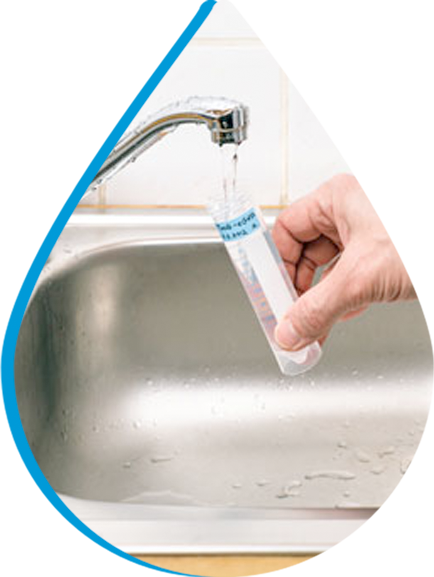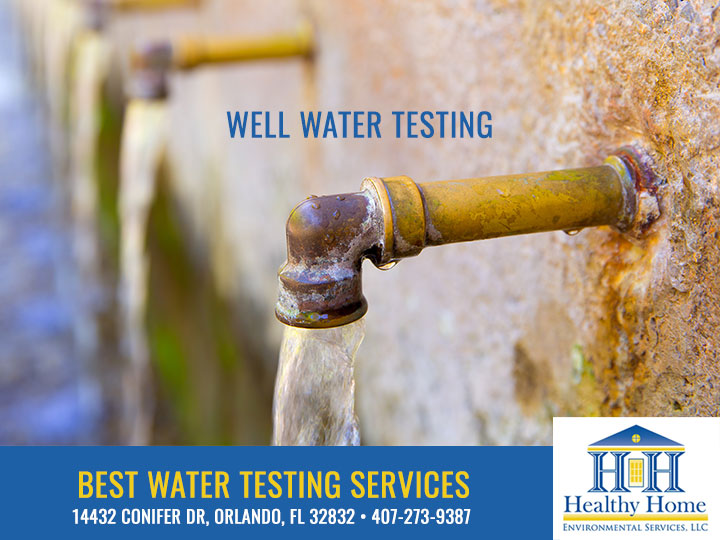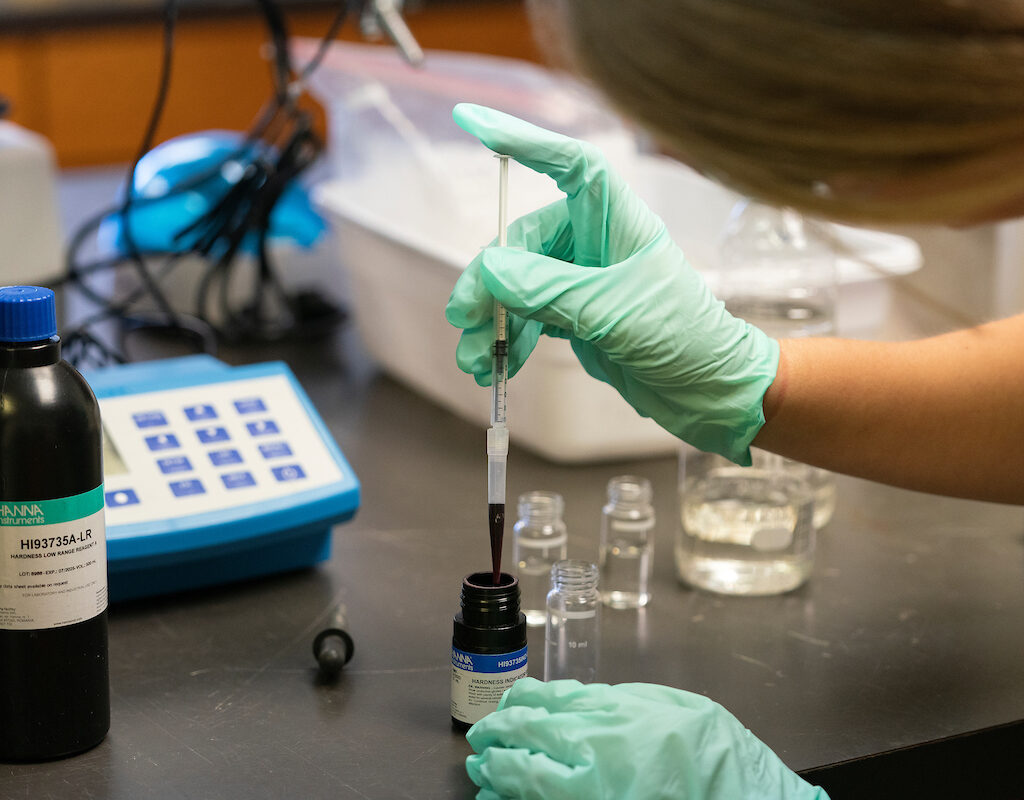Expert Well Water Testing Services: Get Accurate Results Fast
Expert Well Water Testing Services: Get Accurate Results Fast
Blog Article
Discover What Is Included in Water Examining and Just How It Guarantees Safe Drinking Water
Comprehending the intricacies of water screening is crucial in making sure the high quality and security of our drinking water. Through a meticulous exam of physical, chemical, and microbiological facets, water screening determines potential impurities that could posture health and wellness risks.
Secret Components of Water Screening
Water screening is a critical procedure that involves numerous essential components to ensure the safety and top quality of drinking water. Among the main components is the analysis of physical qualities, consisting of odor, turbidity, and color. These features can offer first insights into the water's problem and potential contamination sources. In addition, making sure the pH equilibrium of water is vital, as it affects the water's corrosiveness and the effectiveness of sanitation procedures.
One more substantial part entails microbiological evaluation, where water examples are examined for the presence of microorganisms such as microorganisms, viruses, and protozoa. This evaluation is vital to identify biological hazards that could position health and wellness dangers if taken in. Additionally, chemical analyses are conducted to spot natural and not natural compounds, such as heavy metals, nitrates, and pesticides, that could be existing in the water.

Detecting Harmful Contaminants
Discovering hazardous pollutants in alcohol consumption water is a basic element of securing public wellness. This procedure entails recognizing prospective hazards that can jeopardize the top quality and safety of water materials. Impurities can range from bacteria such as microorganisms, viruses, and protozoa, to not natural substances like lead, arsenic, and nitrates, as well as organic toxins consisting of pesticides and industrial chemicals. Each kind of contaminant positions distinctive wellness risks, making their detection crucial to guarantee the water eaten by the public is risk-free.
Water screening for impurities is typically conducted by regulative companies and water utilities, utilizing a combination of field sampling and lab evaluation. These analyses are made to detect both naturally occurring compounds and anthropogenic contaminants that might have gone into the water via farming drainage, commercial discharge, or aging framework. Normal surveillance is crucial, as contamination degrees can change because of environmental changes, seasonal variants, or human tasks.
The identification of damaging pollutants informs necessary activities, such as water therapy interventions or public advisories, to alleviate risks. Early detection is essential to avoid negative health impacts, ranging from stomach health problems to long-lasting problems like cancer cells, consequently guaranteeing the proceeded security of drinking water.

Chemical Evaluation Methods
In the realm of making certain risk-free drinking water, chemical analysis techniques play an essential role in recognizing and quantifying pollutants. These methods are necessary for finding a vast selection of chemical compounds, consisting of heavy steels, chemicals, and industrial toxins, which can pose considerable wellness risks. Strategies such as atomic absorption spectroscopy (AAS) and inductively coupled plasma mass spectrometry (ICP-MS) are frequently used to measure trace degrees of steels like lead, mercury, and arsenic. These tools give accurate metrology, helping with conformity with governing standards.
Gas chromatography-mass spectrometry (GC-MS) is one more vital strategy, specifically for natural substances. It divides complicated blends and recognizes semi-volatile and unpredictable natural substances, making certain that toxins like benzene and toluene are within secure limits. High-performance fluid chromatography (HPLC) is likewise used for non-volatile compounds, including particular pesticides and drugs.
Ion chromatography is employed to determine concentrations of anions and cations, such as nitrates and sulfates, which are crucial in analyzing water top quality. These chemical analysis methods jointly ensure that alcohol consumption water continues to be risk-free by spotting inconsistencies from developed purity standards, thereby guarding public health and wellness. Making sure precision and precision in these tests is paramount to maintaining the honesty of water security evaluations.
Microbiological Examining Techniques
Accurate microbiological screening is important for safeguarding public wellness by guaranteeing that alcohol consumption water is complimentary from hazardous pathogens. This process includes identifying and enumerating microorganisms such as bacteria, infections, and protozoa that may infect water supplies. Usual microorganisms consist of Escherichia coli, Giardia, and Cryptosporidium, each posing considerable wellness dangers.
Several techniques are used in microbiological testing to recognize these threats. The membrane layer purification method is often made use of, entailing water travelling through a filter that catches bacteria, which are after that cultured to determine their presence and concentration. The multiple-tube fermentation technique enables the metrology of coliform microorganisms utilizing a collection of dilution and incubation actions.
Developments in technology have actually presented molecular techniques such as polymerase chain response (PCR), which permits the rapid and highly specific detection of pathogens by here are the findings enhancing their hereditary material. Enzyme-linked immunosorbent assays (ELISA) additionally offer a method to find microorganisms by determining certain proteins or antigens.
These varied methods are necessary for thorough water top quality assessment, making sure that water therapy processes work and that circulation systems keep safety. By utilizing these microbiological testing techniques, potential health and wellness hazards can be recognized and minimized promptly.

Importance for Public Health
Making certain the microbiological security of drinking water straight affects public health and wellness by avoiding the spread of waterborne conditions. Virus such as germs, viruses, and protozoa can lead to diseases like cholera, dysentery, and intestinal infections (Water Testing Service). The implementation of comprehensive water testing protocols is extremely important in recognizing and reducing these risks, hence guarding neighborhoods from potential break outs
Regular water screening not just identifies microbial pollutants but additionally examines chemical and physical criteria that can affect wellness. Too much levels of nitrates or hefty metals such as lead can pose significant wellness dangers, specifically to vulnerable populaces like babies and expectant females. By determining these threats early, water testing makes it possible for prompt interventions, making certain the supply of water stays within secure consumption requirements.
Furthermore, water testing plays an essential function in preserving public self-confidence in local water systems. For plan manufacturers and health authorities, the data acquired from water screening educates decisions on infrastructure investments and public wellness approaches, guaranteeing resources are guided where they are most needed.
Verdict
Water screening works as an essential system for making sure the safety and top quality of drinking water with thorough analysis of its physical, chemical, and microbiological homes. By discovering unsafe contaminants, such as heavy metals and pesticides, and utilizing innovative methods like chromatography and spectrometry, water testing promotes the identification of prospective health risks. The execution of rigorous testing procedures is important for preserving conformity with security criteria, inevitably securing public health and wellness and reinforcing confidence in community water systems.

By determining these dangers early, water screening allows timely special info treatments, making sure the water supply continues to be within safe usage requirements.
Water screening offers as a crucial system for making certain the safety and high quality of drinking water with detailed analysis of its physical, chemical, and microbiological properties.
Report this page